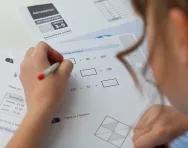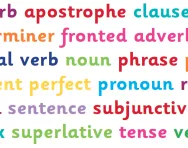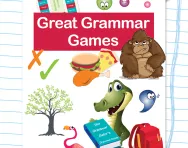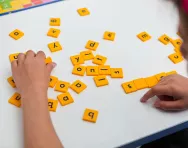Important update from TheSchoolRun
For the past 13 years, TheSchoolRun has been run by a small team of mums working from home, dedicated to providing quality educational resources to primary school parents. Unfortunately, rising supplier costs and falling revenue have made it impossible for us to continue operating, and we’ve had to make the difficult decision to close. The good news: We’ve arranged for another educational provider to take over many of our resources. These will be hosted on a new portal, where the content will be updated and expanded to support your child’s learning.
What this means for subscribers:
- Your subscription is still active, and for now, you can keep using the website as normal — just log in with your usual details to access all our articles and resources*.
- In a few months, all resources will move to the new portal. You’ll continue to have access there until your subscription ends. We’ll send you full details nearer the time.
- As a thank you for your support, we’ll also be sending you 16 primary school eBooks (worth £108.84) to download and keep.
A few changes to be aware of:
- The Learning Journey weekly email has ended, but your child’s plan will still be updated on your dashboard each Monday. Just log in to see the recommended worksheets.
- The 11+ weekly emails have now ended. We sent you all the remaining emails in the series at the end of March — please check your inbox (and spam folder) if you haven’t seen them. You can also follow the full programme here: 11+ Learning Journey.
If you have any questions, please contact us at [email protected]. Thank you for being part of our journey it’s been a privilege to support your family’s learning.
*If you need to reset your password, it will still work as usual. Please check your spam folder if the reset email doesn’t appear in your inbox.
What is the Y6 Grammar, Punctuation and Spelling test?

What is the SPAG test?
The English grammar, punctuation and spelling test (informally known as the SPAG test) was introduced in May 2013 as part of the KS2 SATs programme for Year 6 pupils, replacing the previous English writing test.
‘The Government wants all children to leave primary school with a sound grasp of essential English skills,’ a Department for Education (DfE) spokesperson saidd at the time. ‘The test will put an additional focus on writing skills and encourage good teaching.’
In May 2016, the SPAG test was updated (in line with the new primary curriculum) and was made more challenging.
Since 2016 children have also been tested on spelling, grammar and punctuation as part of the KS1 SATs in Year 2, though the SPAG paper has not been statutory every year so schools have been able to choose whether to adminster it or not.
What does the SPAG test examine?
The SPAG test includes questions that assess the following elements of the English curriculum:
- Sentence grammar through both identifying and writing sentences that are grammatically correct
- Punctuation through identifying and writing sentences that are correctly punctuated
- Vocabulary through identifying and writing sentences in which a word is used correctly
- Spelling (read out parents' guide to Year 5 and Year 6 spelling patterns and rules)
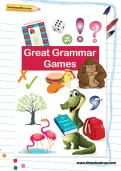
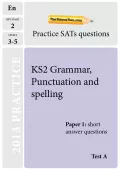
Prepare for the KS2 grammar test
- 5 practice papers
- A further 5 stand-alone grammar test practice papers
- Grammar Games learning pack
What sort of questions will your child need to answer?
The SPAG test consists of two papers.
Paper 1 requires multiple choice or short sentence answers, covering areas such as using connectives (because, despite, however, etc), using pronouns (I/me) correctly, capitalising the correct words in a sentence and explaining why, putting the correct punctuation into a given sentence, writing sentences that illustrate two different meanings of the same word (such as ‘present’), identifying the verb/noun/adjective/clauses in a sentence, and using plurals correctly. For example:
A: laziness/lazily/lazier/laziest
Paper 2 is a spelling test, where children will have to spell words dictated by the examiner (presented within sentences). For example:
What skills and knowledge do children need to succeed?
‘The ability to write with purpose, accuracy and clarity, drawing on a wide range of vocabulary, is integral to success,’ says a DfE spokesperson.
But for your child to do well in the SPAG test, they don’t just have to be good at writing; they also need a technical understanding of how the English language works.
As well as being able to spell words correctly, use a wide range of vocabulary and punctuate well, they need to grasp the meaning of grammatical terms such as noun, verb, adjective, prefix, pronoun and adverb, know what phrases and clauses are and how to use them, understand what connectives are and how they work, know how to turn a question into a command, and so on. This terminology can be a stumbling block even for children who are otherwise good at reading and writing, and make the questions hard to understand; for a parent-friendly guide to the vocabulary and how English and grammar concepts are taught in primary school see our primary literacy glossary for parents.
How can you help your child practise at home?
There are plenty of other ways to help your child revise for the test:
- Copy some sentences from a book and get him to underline either the main or subordinate clause.
- Write down some unpunctuated sentences for your child to punctuate correctly.
- Call out a word and ask your child to tell you a synonym (a word that means the same) or an antonym (a word that means the opposite).
- When writing letters or emails, encourage your child to add an adjective or adverb to a sentence (e.g. ‘Thank you for my wonderful birthday present’)
- If your child asks you a question, ask how he would rephrase it as a command (e.g. ‘Can you make me a drink?’ becomes, ‘Make me a drink!’)
- Make spelling part of everyday life! Try a few unusual strategies to improve your child's spelling, put a few teachers' spelling tricks to the test or play some great spelling games.
- Encourage your child to read a variety of texts – fiction, information books, comics, newspapers, magazines, etc – to broaden their vocabulary.
TheSchoolRun also offers a selection of grammar worksheets and spelling practice worksheets – browse through our resources to find the right ones for your child, as well as looking through our SPAG 'mock' papers, available to subscribers.
Can I see some examples of the KS2 SATs grammar test?
Yes – look through our selection of free official past papers for KS2 SATs and subscriber-only mock papers.
TheSchoolRun has also produced SPAG-only practice papers, written in the style of the pre-2016 test, which are available to subscribers (click on the images below to access each paper).




